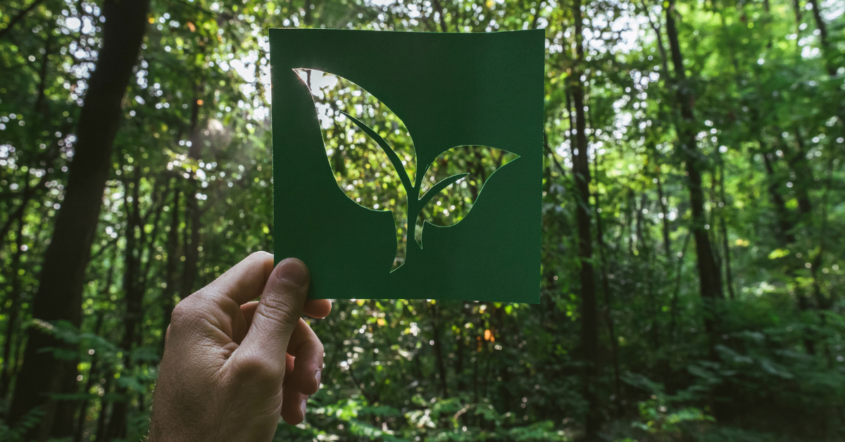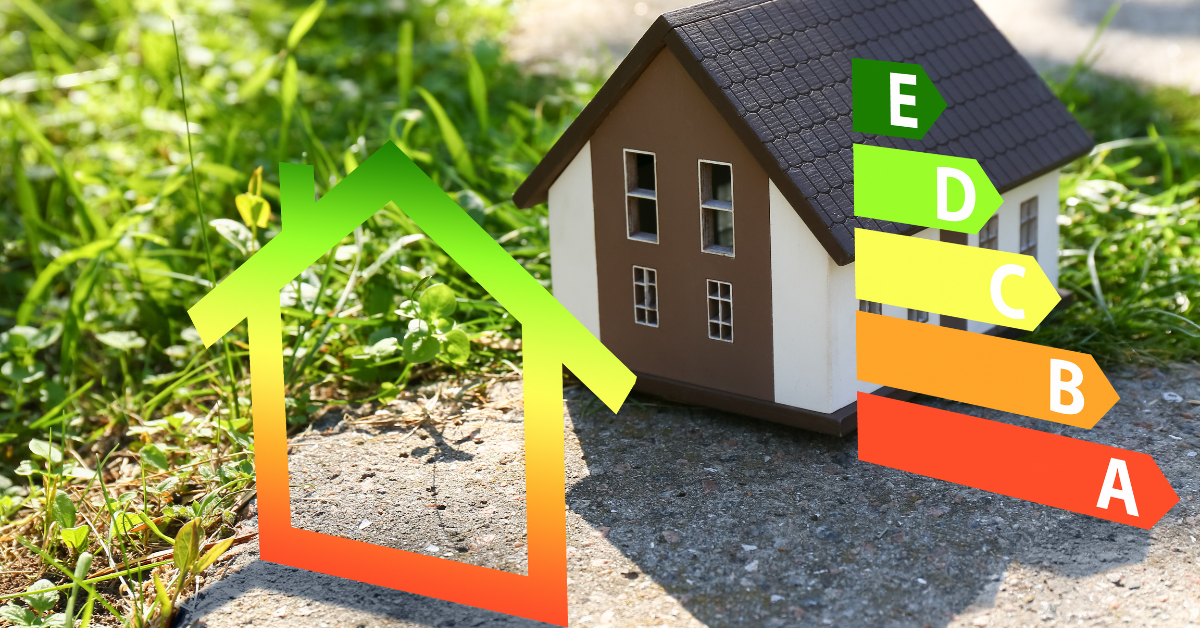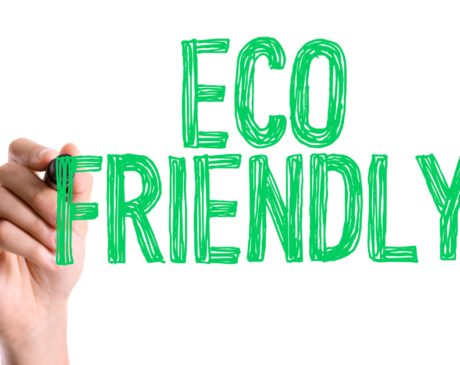What materials are used to build an eco-friendly house?

The question we try to answer with this new article is not an easy one but is an important one: what materials are used to build an eco-friendly house?
As our world grapples with the consequences of climate change and environmental degradation, the demand for sustainable and eco-friendly housing solutions is on the rise. Building an eco-friendly house not only reduces your carbon footprint but also provides a healthier and more efficient living space. One crucial aspect of eco-friendly home construction is the choice of materials. In our article “What is the most eco friendly material to build a house?” we have already explored some eco-friendly material alternatives and identified the best ecological choices; in this article, we will see the materials commonly used to build a sustainable house and their impact on the environment and we will compare them to the common construction materials of typical modern non-eco-friendly houses.
What’s the difference between an eco-friendly house and a normal house?
The difference between an eco-friendly house and a normal house lies in various aspects related to design, construction and operation. Here are some key distinctions:
Construction materials
- Eco-friendly house: eco-friendly houses use sustainable and renewable materials like reclaimed wood, bamboo, recycled metal and low-impact concrete alternatives. These materials have a lower environmental footprint and reduce the depletion of natural resources.
- Normal house: traditional houses often use conventional materials such as concrete, steel and standard wood, which may not be sustainably sourced. These materials can have a higher environmental impact.
Energy efficiency
- Eco-friendly house: eco-friendly houses are designed with energy efficiency in mind. They typically feature advanced insulation, high-efficiency appliances, low-E windows and renewable energy sources like solar panels. These measures reduce energy consumption and lower utility bills while decreasing greenhouse gas emissions.
- Normal house: traditional houses may not prioritise energy efficiency, leading to higher energy bills and increased carbon emissions. They might have less insulation and less efficient heating, cooling and lighting systems.
Water conservation
- Eco-friendly house: eco-friendly homes incorporate water-saving fixtures, rainwater harvesting systems and efficient irrigation. These features reduce water consumption and minimise the strain on local water resources.
- Normal house: traditional homes may lack such water-saving technologies, resulting in higher water use and potential water wastage.

Indoor Air Quality
- Eco-friendly house: eco-friendly houses often use non-toxic and low-VOC (volatile organic compound) paints, finishes and materials. This ensures a healthier indoor environment by reducing indoor air pollution and potential health risks.
- Normal house: conventional houses may use paints and finishes that emit VOCs, potentially leading to poorer indoor air quality and health concerns.
Waste Reduction
- Eco-friendly house: sustainable construction practices in eco-friendly houses aim to reduce waste by using recycled or reclaimed materials. Builders strive to minimize the environmental impact of the construction process itself.
- Normal house: traditional construction methods may generate more waste, contributing to landfill overflows and environmental degradation.
Long-Term Sustainability
- Eco-friendly house: eco-friendly houses are designed for long-term sustainability. Their energy-efficient features and use of durable materials help lower maintenance costs and extend the lifespan of the house.
- Normal house: traditional houses may require more frequent maintenance and renovations, potentially increasing their long-term environmental impact.
In summary we have learned some of the concepts and discovered some materials that answer our main question: what materials are used to build an eco-friendly house.
The primary difference between an eco-friendly house and a normal house is their approach to environmental responsibility. Eco-friendly houses think first about sustainability, energy efficiency, water conservation and healthier living conditions, aiming to reduce their overall environmental impact.
On the other hand, normal houses may not incorporate these environmentally friendly features and practices, making them less environmentally responsible.
Materials for a Sustainable Future
One crucial aspect of eco-friendly home construction is the choice of materials. Let’s explore the materials commonly used to build an eco-friendly house and their impact on the environment:
- Recycled and reclaimed materials: one of the fundamental principles of eco-friendly construction is minimising waste and reducing the consumption of new resources. Recycled and reclaimed materials play a significant role in achieving this goal. These materials can include reclaimed wood, salvaged bricks and recycled metal. By using these materials, you can give a second life to resources that might otherwise end up in landfills, thereby conserving energy and raw materials.
- Sustainable wood: sustainable wood, often certified by organisations like the Forest Stewardship Council (FSC), comes from responsibly managed forests. These forests adhere to strict environmental and social standards, ensuring that trees are harvested sustainably and ecosystems are protected. By choosing FSC-certified wood for your eco-friendly home, you promote responsible forestry practices and reduce deforestation.
- Bamboo: bamboo is a remarkable eco-friendly building material due to its rapid growth and renewability. It is a strong and versatile material that can be used for flooring, cabinetry and even structural elements. Bamboo requires minimal water and pesticides, making it an excellent choice for those concerned about both environmental and human health.
- Insulation materials: proper insulation is essential for maintaining a comfortable indoor temperature while reducing energy consumption. Traditional insulation materials like fiberglass can have adverse health and environmental impacts. Eco-friendly alternatives include cellulose insulation made from recycled newspaper, sheep’s wool insulation (a natural and renewable material), hemp insulation, which grows quickly and requires minimal pesticides.
- Low-emissivity (Low-E) windows: windows play a crucial role in the energy efficiency of a home. Low-E windows have a special coating that reduces heat transfer, making it easier to maintain a consistent indoor temperature. This reduces the need for excessive heating or cooling, which can significantly lower energy bills and decrease greenhouse gas emissions.
- Recycled metal: recycled metal, such as steel and aluminum, is a sustainable choice for roofing and structural components. These materials can be melted down and reused multiple times without compromising their quality. Additionally, using recycled metal reduces the energy required for mining and refining new metal ores.
- Earth-friendly paints and finishes: traditional paints and finishes often contain volatile organic compounds (VOCs), which can release harmful chemicals into the air. Eco-friendly alternatives are now readily available, using low or no VOCs, thereby improving indoor air quality and reducing pollution.
- Concrete alternatives: concrete is a ubiquitous building material, but it has a significant carbon footprint due to the production of cement, a key ingredient. Sustainable alternatives like rammed earth, which involves compressing natural materials like earth, chalk or lime, can be used for walls and foundations. These materials require less energy and emit fewer greenhouse gases during production.

Green architecture examples
At lifestylemind.com, we believe in the power of sustainability and we want to provide you with some examples of green architecture from around the world. Green architecture, also known as sustainable or eco-friendly architecture, is a design approach that prioritizes minimizing the negative environmental impact of buildings while promoting efficiency and sustainability.
Here are some notable examples of green architecture:
- The Edge, Amsterdam, Netherlands: designed as one of the world’s greenest office buildings, The Edge boasts innovative features like a smart lighting system that adjusts to daylight, rainwater harvesting and solar panels that provide all of its energy needs. It has earned the highest sustainability rating (BREEAM) ever recorded.
- One Angel Square, Manchester, UK: this award-winning building serves as the headquarters of the Co-operative Group. It features a combined heat and power plant, rainwater harvesting and a sophisticated natural ventilation system that helps reduce energy consumption and greenhouse gas emissions.
- Bosco Verticale (Vertical Forest), Milan, Italy: designed by Stefano Boeri, these residential towers are covered in more than 900 trees, 5,000 shrubs and 11,000 plants. The vegetation helps filter the air, provide shade and create a microclimate, reducing energy use for heating and cooling.
- Masdar City, Abu Dhabi, UAE: Masdar City is a sustainable urban development designed to be a model for future cities. It features narrow streets to maximise shade, extensive use of solar energy and a fully automated personal rapid transit (PRT) system to reduce car traffic.
- The Bullitt Center, Seattle, USA: often referred to as “the greenest commercial building in the world,” The Bullitt Center generates its electricity from solar panels, harvests rainwater, treats its wastewater on-site and aims to be self-sufficient for energy and water needs.
- Taipei 101, Taipei, Taiwan: this iconic skyscraper was one of the world’s tallest buildings when completed and incorporates numerous green features. It has a double-pane, low-emissivity glass curtain wall, energy-efficient lighting and a tuned mass damper that reduces the building’s sway during earthquakes and typhoons.
- The Crystal, London, UK: this sustainable cities initiative by Siemens showcases cutting-edge green building technologies. It incorporates solar power, ground-source heat pumps, and advanced building management systems to minimise energy use.
- The C.K. Choi Building, Vancouver, Canada: this sustainable academic building at the University of British Columbia is known for its green roof, natural ventilation and use of recycled and reclaimed materials in its construction.
- Maggie’s Centre, Dundee, UK: designed by the renowned architect Frank Gehry, this cancer care center features a unique and environmentally sensitive design. It incorporates sustainable materials and energy-efficient systems while providing a serene and welcoming environment for patients.
Conclusion
Building an eco-friendly house is not only an environmentally responsible choice, but also a sound investment in the future.
The choice of materials plays a pivotal role in creating a sustainable and energy-efficient home. By selecting recycled, reclaimed, sustainable and low-impact materials, you can reduce your carbon footprint, conserve natural resources and create a healthier living environment for yourself and future generations.
As the construction industry continues to embrace eco-friendly practices, we can look forward to a future where sustainable homes are the norm rather than the exception.
We hope to fulfilled the aim of the question “what materials are used to build an eco-friendly house?” with this article and love to receive your opinions and follow-up about it.



